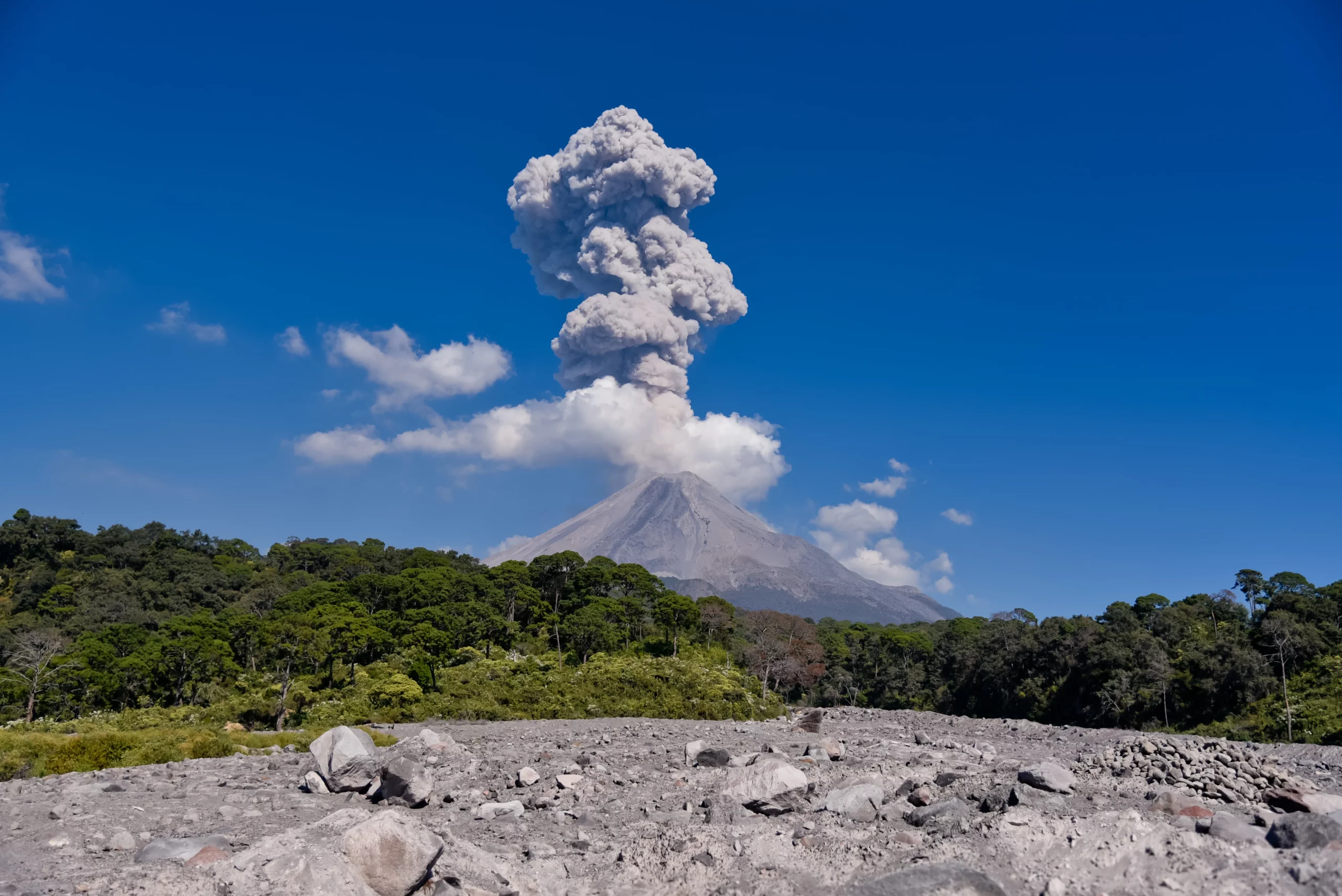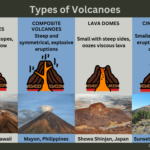Volcanoes, those fiery mountains, are not just geological wonders but also powerful players in climate change. Over the past two decades, I’ve been digging deep into their secrets, and it’s fascinating! Let’s dive into the world of volcanoes and see how they shape our planet’s climate, from the gases they release to the way they affect weather patterns. Buckle up for a journey through the heart of our Earth’s fiery underbelly.
Volcanoes and Climate Change: A Tale of Fire and Ice
Have you ever wondered how those towering behemoths called volcanoes shape our climate? Well, buckle up, folks, because we’re about to dive into the fiery and icy realm where volcanoes and climate dance a mesmerizing tango.
Volcanoes are like Earth’s very own chimneys, releasing all sorts of gases into our atmosphere. And guess what? Some of these gases have the power to warm or cool our planet!
Volcanoes as Greenhouse Geeks
Volcanic eruptions can spew out carbon dioxide, a gas that traps heat in our atmosphere, just like a cozy blanket trapping your body heat on a cold night. Think of it as volcanoes playing the role of sneaky greenhouse gas factories, contributing to a gradual warming trend.
Volcanoes as Cooling Crusaders
But hold your horses, there’s more to the story! Volcanoes also unleash sulfur dioxide, a gas that acts like a sunblock for our planet. When sulfur dioxide gets into the stratosphere, it teams up with water vapor to create a shield of aerosols that reflects the sun’s rays back into space. It’s like volcanoes giving our planet a temporary umbrella to cool down.
Humanity’s Impact: A Volcano in Comparison
While volcanoes can stir up the climate, it’s important to remember that humans are the real climate change MVPs. Our activities, like burning fossil fuels and chopping down forests, release way more greenhouse gases than volcanoes ever could. So, the climate change we’re facing today is mostly a result of our own actions, not fiery volcanoes.
Volcanoes in the Changing Climate
As our oceans get warmer, they tend to keep their secrets closer to their hearts. This means less sulfur dioxide from volcanoes can reach the stratosphere to form those cooling sunshades. So, in the future, volcanic eruptions may have a smaller impact on cooling our planet.
Conclusion
Volcanoes and climate change have a complex relationship, with volcanoes playing both warming and cooling roles. But despite their efforts, our human activities remain the dominant force driving climate change. Understanding this interplay is like solving a puzzle, helping us craft clever ways to tackle the challenges of a changing climate. So, next time you see a volcano erupting, take a moment to ponder the intricate dance between fire and ice that shapes our planet’s destiny.
- Discover the most fascinating and famous volcanoes that have shaped our planet’s history.
- Embark on a journey to explore the different Types of volcanoes and unravel their unique characteristics.
- Delve into the intriguing world of Volcanic hazards and risks to understand the potential threats and safety measures.
- Witness the unforgettable impact of Famous volcanic eruptions in history and learn from the lessons of the past.
- Prepare for an adventure with Volcano tourism and safety to experience the awe-inspiring beauty of active volcanoes.
- Journey to the Volcanic islands and archipelagos scattered across the globe, each with its captivating geological wonders.
- Study the unique properties of Volcanic rocks and minerals, formed under extreme conditions within the Earth’s crust.
- Explore the potential of Geothermal energy from volcanoes as a renewable and sustainable energy source.
- Venture beyond our planet to discover Volcanoes on other planets in our solar system and beyond.
- Stay informed about the latest advancements in Volcano monitoring and prediction techniques to enhance preparedness and mitigate risks.
Can volcanic eruptions cause both cooling and warming effects?
Volcanic eruptions can be dramatic displays of nature’s power, but they can also have surprising effects on our climate. It’s like nature’s own climate control, but with a twist.
Cooling Down
When volcanoes erupt, they spew out sulfur dioxide gas into the atmosphere. This gas creates tiny particles that act like a shield, reflecting sunlight away from Earth. It’s like having a layer of extra sunscreen in the sky, reducing the heat that would normally reach the planet’s surface. So, volcanic eruptions can give us a temporary break from the sun’s rays, cooling things down.
Heating Up
But wait, there’s more! Volcanic eruptions also release carbon dioxide (CO2), a gas that traps heat in the atmosphere. Now, you might be thinking, “Heat? That’s not so cool!” And you’d be right. Trapping heat is a big no-no when it comes to climate change. It’s like adding a blanket to the atmosphere, making things warmer than they should be.
Balancing Act
So, we have cooling sulfur dioxide and warming carbon dioxide. It’s like a tug of war between these two gases, trying to control our climate. Which one wins? Well, it depends on the size of the eruption, the gases released, and even the weather conditions at the time. It’s like throwing a bunch of factors into a blender and seeing what happens.
Overall Impact
While volcanic eruptions can have a short-term impact on our climate, they’re just one piece of the puzzle. Human activities, like burning fossil fuels, release much more carbon dioxide and drive up the planet’s temperature. So, while volcanoes may make a temporary difference, we need to tackle the big players to truly address climate change.
Key Points:
- Volcanic eruptions release gases that can both cool and warm the planet.
- Sulfur dioxide creates aerosols that reflect sunlight, cooling the Earth.
- Carbon dioxide traps heat in the atmosphere, leading to warming.
- The overall impact of volcanoes on climate is relatively small compared to human activities.
- Climate change may affect how volcanic eruptions influence our climate.
So, next time you hear about a volcanic eruption, don’t just think about the ash and lava. Remember the sneaky gases that can have a topsy-turvy effect on our climate!
How Does Human Activity Stack Up Against Volcanic Emissions?
Picture this: You’ve got a big carbon dioxide party going on, and you’re the main guest. That’s what human activity is like when it comes to climate change.
Every year, we release a whopping 35 billion tons of carbon dioxide into the air, like throwing a massive celebration that leaves the planet gasping for breath. And if you thought volcanoes were the party crashers, think again. They only bring about 60 times less carbon dioxide to the table!
Fossil Fuels: The Carbon King
The culprits behind our massive carbon footprint? None other than fossil fuels, those relics of the past we keep burning. Every time we drive our cars, turn on the lights, or fire up the heat, we’re adding to the carbon party.
But wait, there’s more! We’re also cutting down forests like there’s no tomorrow. Trees are like giant carbon vacuums, sucking it up from the air. But when we take them down, all that carbon gets released back into our party atmosphere.
Volcanoes: Small-Time Carbon Contributors
Don’t get me wrong, volcanoes do have their own carbon-emitting moments. But compared to us humans, they’re like tiny partygoers. Even Mount Pinatubo’s epic eruption in 1991 only put out about 1% of what we pump out in a year.
Human Carbon Chaos vs. Volcanic Tranquility
The carbon cycle is like a game of musical chairs, where carbon takes a ride through the atmosphere, oceans, and land. But we humans are playing a dangerous game, disrupting the cycle and piling up carbon in the atmosphere. It’s like we’re throwing a never-ending carbon party, and the planet is slowly suffocating.
Key Takeaways for Partygoers:
- We humans are the carbon ringleaders, far outplaying volcanoes.
- Our carbon-emitting activities are like one giant party that’s hurting the planet.
- Volcanoes are just small-time players, like the guys who show up with a few beers and don’t make a big mess.
Bottom Line: We need to stop trashing the carbon cycle and start investing in a cleaner future. Let’s turn down the volume on our carbon party and give the planet a chance to breathe.
How Do Volcanic Eruptions Affect the Carbon Cycle?
Imagine Earth as a delicate dance between its systems. Volcanoes, like fiery dancers, play a role in shaping the air we breathe and the climate we experience. As a volcanologist, I’ve spent years exploring the fascinating interplay between volcanoes and the carbon cycle. Let’s take a closer look:
The Erupting Carbon Juggler
When volcanoes erupt, they release a cocktail of gases, including carbon dioxide (CO2) – a key player in the carbon cycle and a troublemaker for our climate. These fiery blasts can spew out massive amounts of CO2, potentially warming the planet.
But here’s a surprising twist: volcanoes also act as cooling agents. They release sulfur dioxide (SO2), which teams up with water vapor to create sulfate aerosols. These tiny particles bounce sunlight back into space, counteracting the warming effects of CO2. It’s like a tug-of-war between warming and cooling influences.
Volcanic CO2: A Tiny Drop in the Human Bucket
While volcanic eruptions release CO2, they’re like a small goldfish in a giant ocean compared to human activities. Our burning of fossil fuels, bulldozing forests, and industrial shenanigans release colossal amounts of CO2, making volcanic emissions look like a mere drop in the bucket.
Volcanic Firestorms: Climate Shapers with a Short Fuse
Even though volcanic CO2 emissions are small compared to human contributions, some eruptions have left an unforgettable mark on climate history. Take for example, Mount Tambora’s explosive performance in 1815. It spewed so much ash and aerosols into the atmosphere that it set off a “volcanic winter,” sending global temperatures tumbling for years.
Key Takeaways:
- Volcanoes release CO2, a greenhouse gas that warms the planet.
- They also emit sulfur dioxide, which forms cooling sulfate aerosols.
- Volcanic eruptions have a relatively small impact on the carbon cycle compared to human activities.
- However, major eruptions can cause significant but short-lived climate disruptions.
The Takeaway Table: Volcanoes and the Carbon Cycle
| Volcanic Emission | Impact on Carbon Cycle |
|---|---|
| Carbon Dioxide (CO2) | Contributes to climate change |
| Sulfur Dioxide (SO2) | Forms cooling sulfate aerosols |
| Overall Impact | Relatively small compared to human activities |
FAQ
Q1: Do volcanoes contribute significantly to climate change?
A1: While volcanic eruptions emit gases like carbon dioxide and sulfur dioxide, human activities release far more greenhouse gases, making human activities the dominant contributor to climate change.
Q2: Can volcanic eruptions cause global cooling?
A2: Large volcanic eruptions can release aerosols and sulfur dioxide, which can cause temporary global cooling by reflecting sunlight. However, these cooling effects are typically short-term.
Q3: How might climate change affect volcanic eruptions?
A3: Climate change is predicted to lead to increased ocean stratification, which may weaken the cooling effects of volcanic eruptions by reducing the amount of sulfate aerosols that reach the stratosphere.
Q4: Is it valid to compare the climate impact of human activities to volcanoes?
A4: Yes, comparing the climate effects of human activities to volcanoes is valid. Human-produced carbon dioxide emissions greatly exceed those from volcanoes, highlighting the dominant role of human activities in climate change.
Q5: Can volcanic eruptions influence ozone depletion?
A5: Volcanic eruptions can release sulfur dioxide, which can form sulfate aerosols in the stratosphere. These aerosols can contribute to ozone depletion by reacting with ozone-depleting substances like chlorofluorocarbons.
- Star Ring Trends: Etsy vs Amazon - March 28, 2025
- Boost Pollinator Habitats: Baby Blue Eyes Sustainable Farming Guide - March 28, 2025
- Protect Big Black Bears: Effective Conservation Strategies - March 28, 2025
















